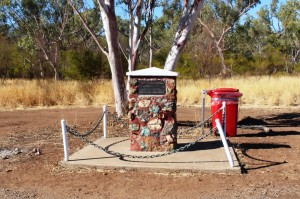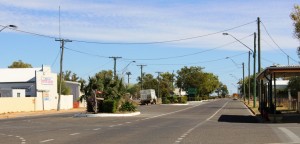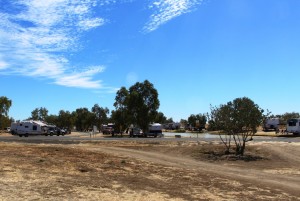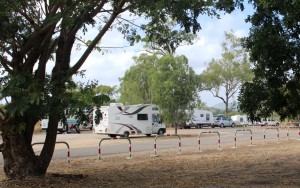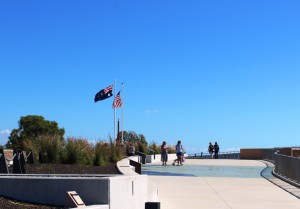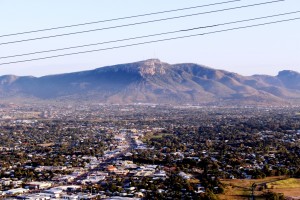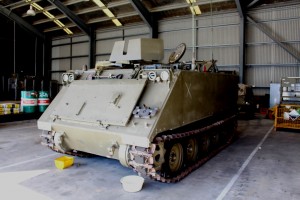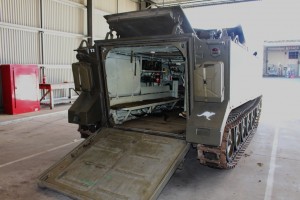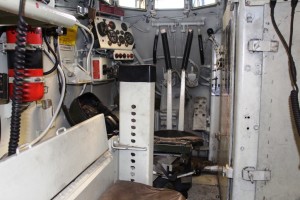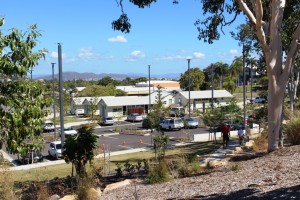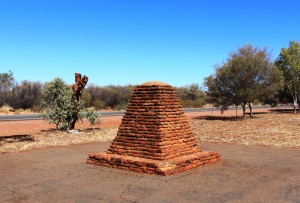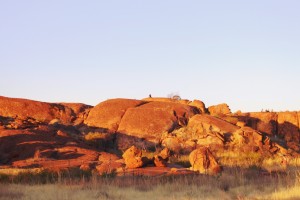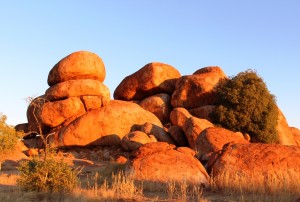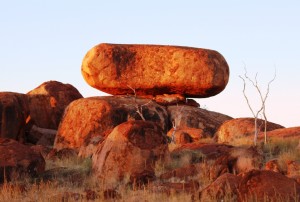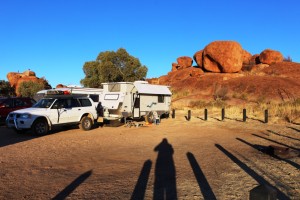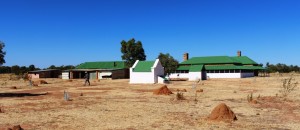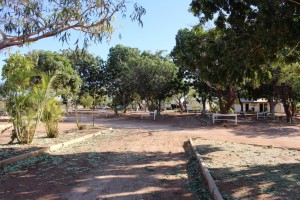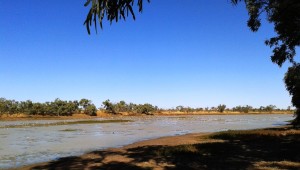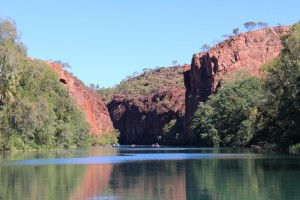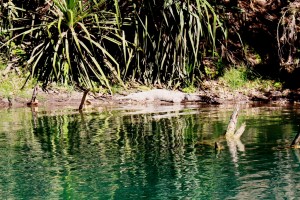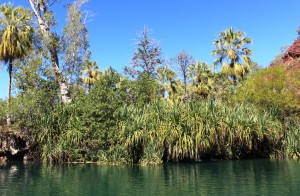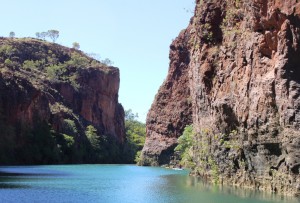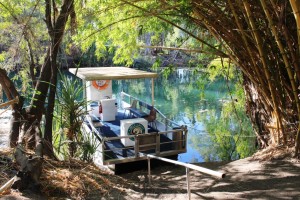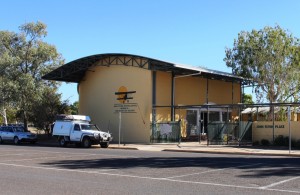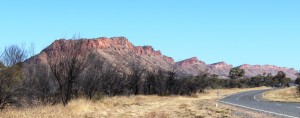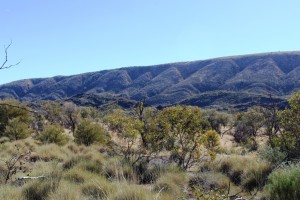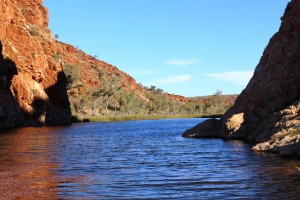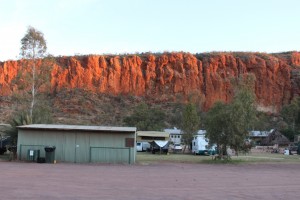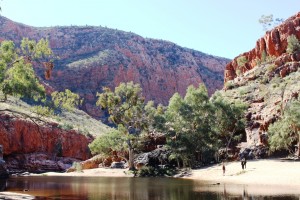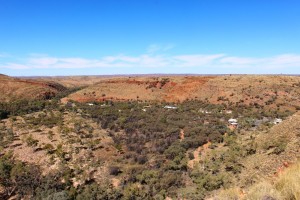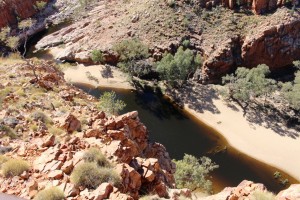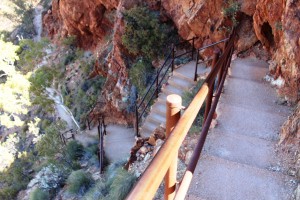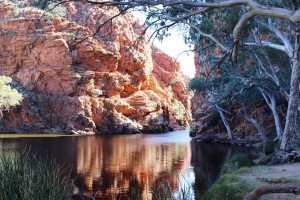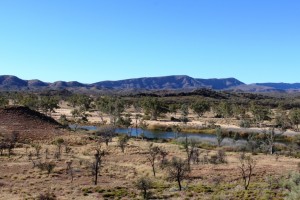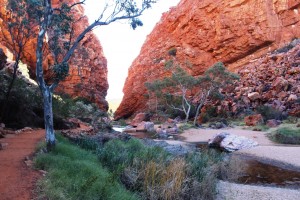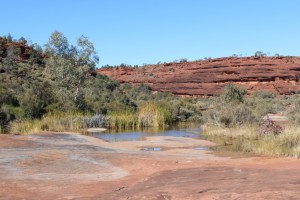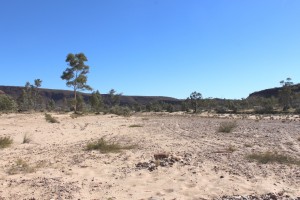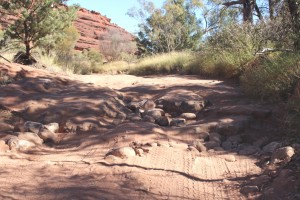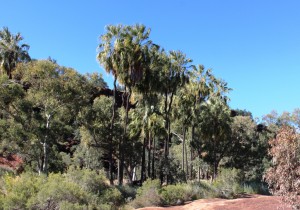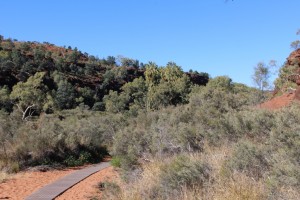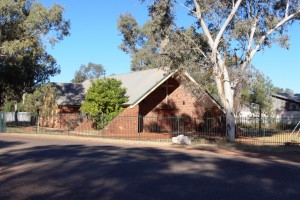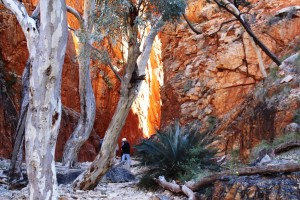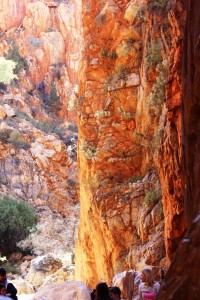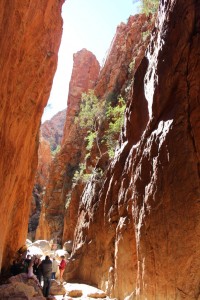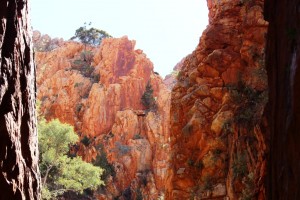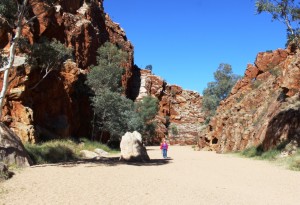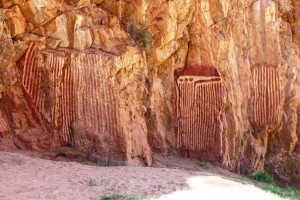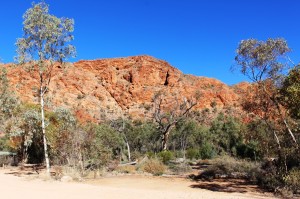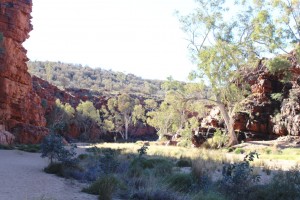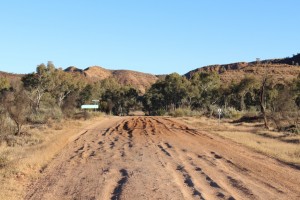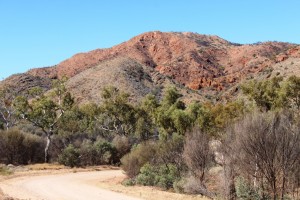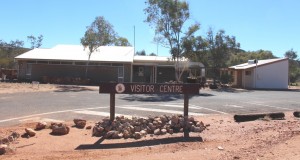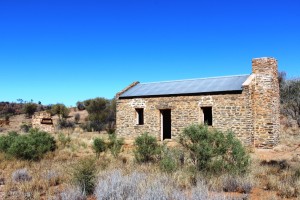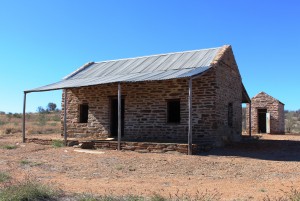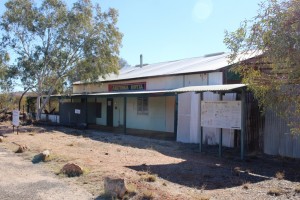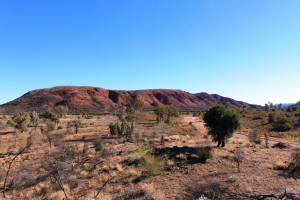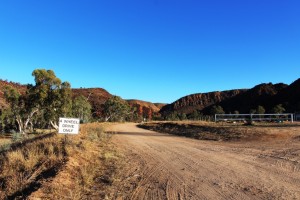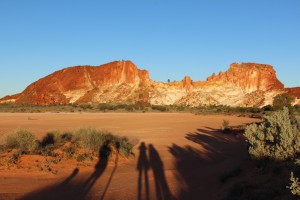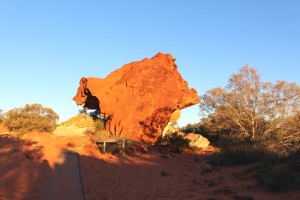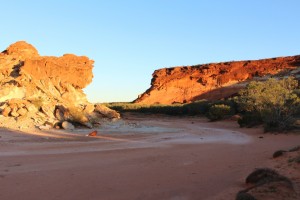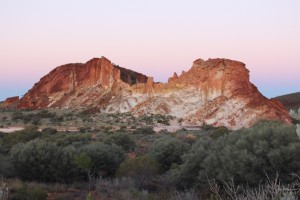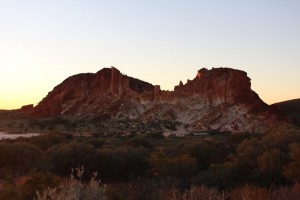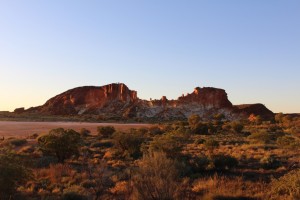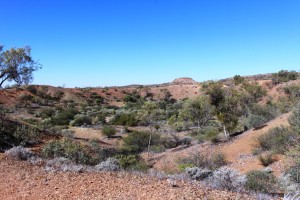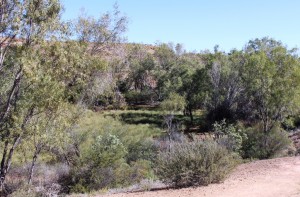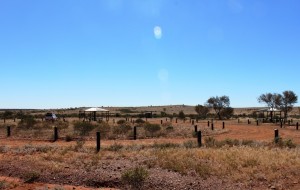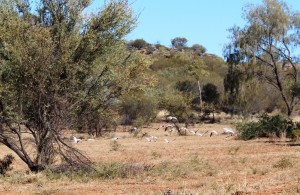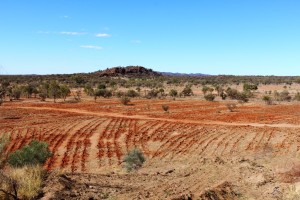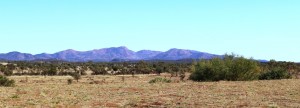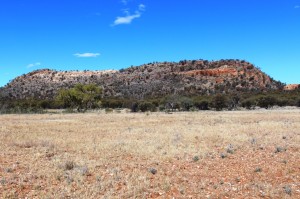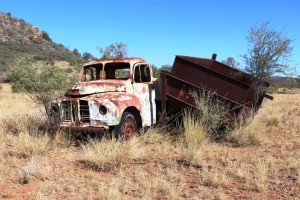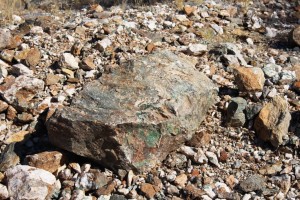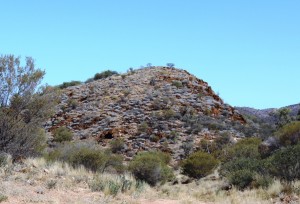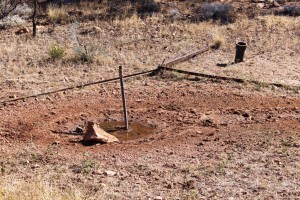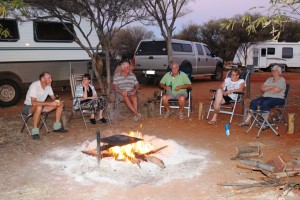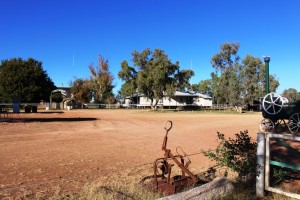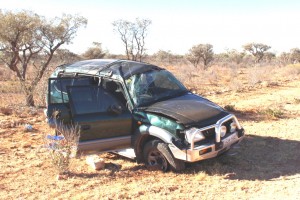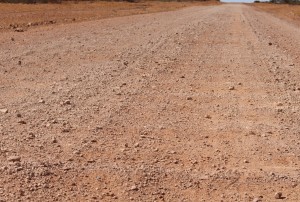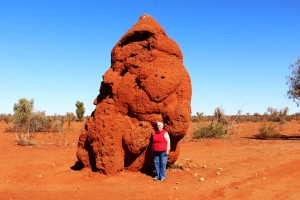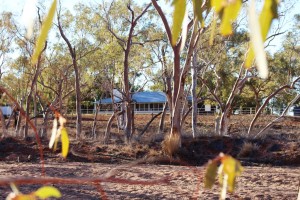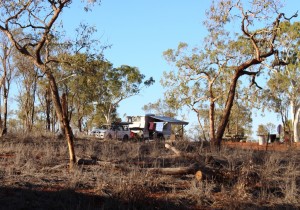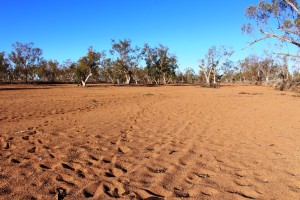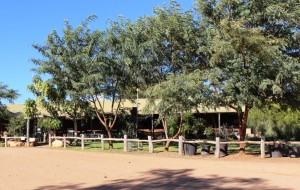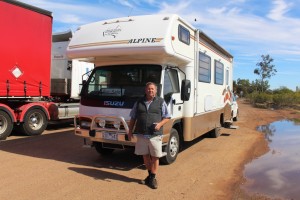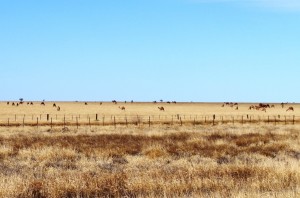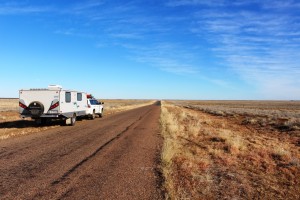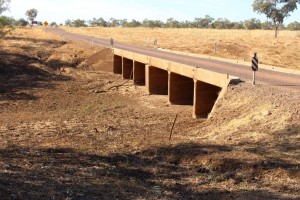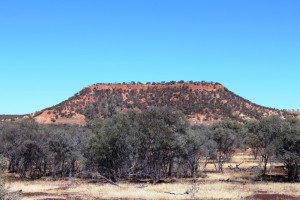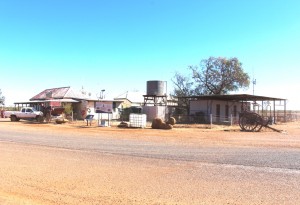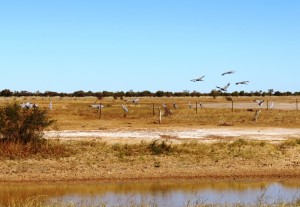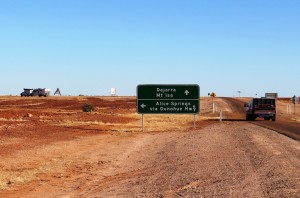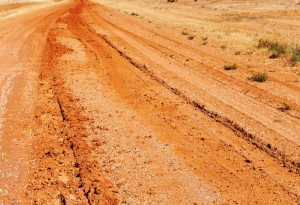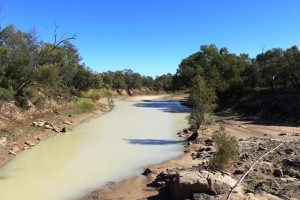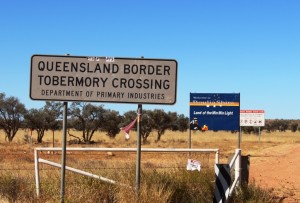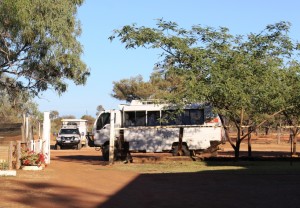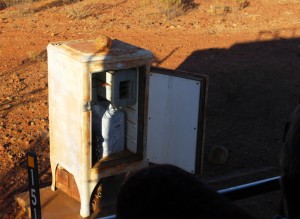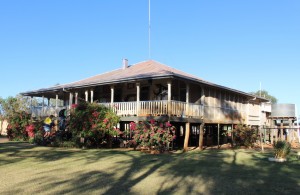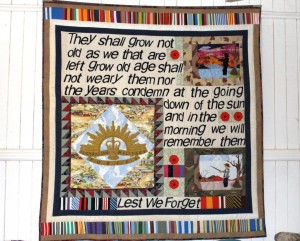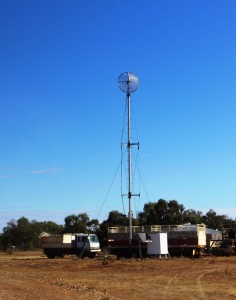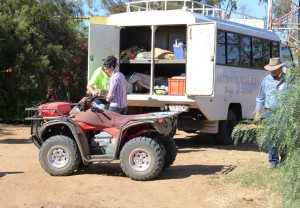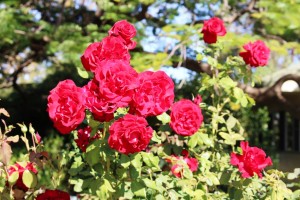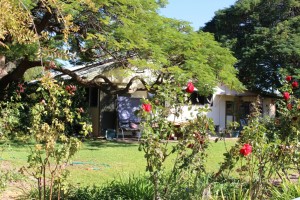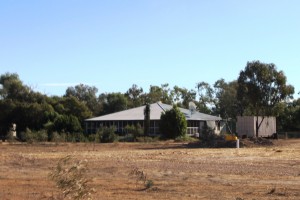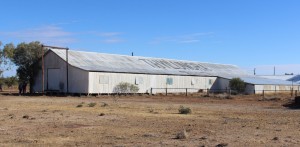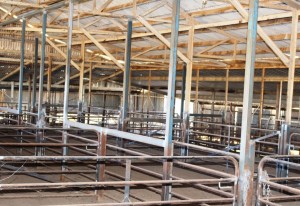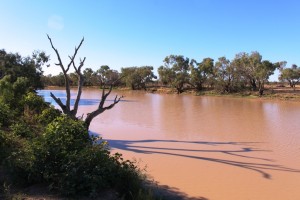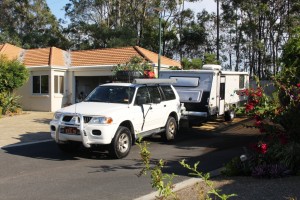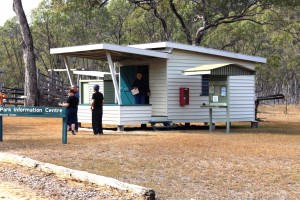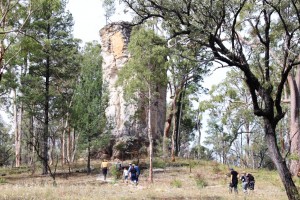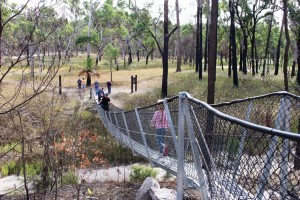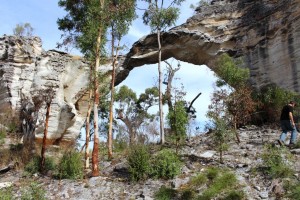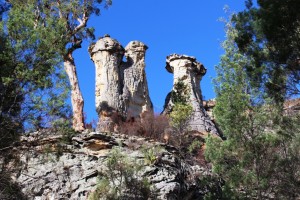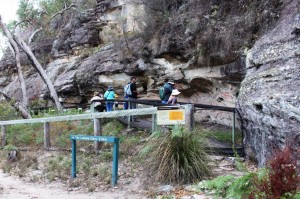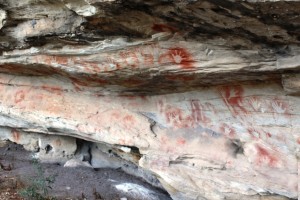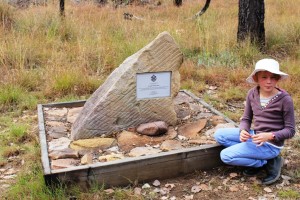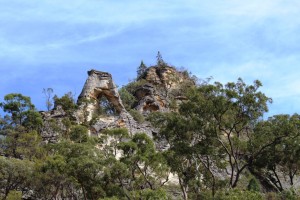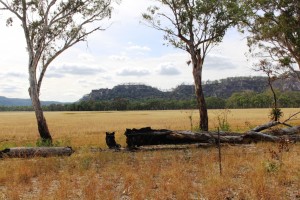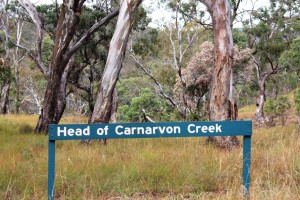During the four days spent in Mount Isa we had discussed our route to reach home. The idea of going south seemed attractive until the weather forecast suggested rain just at the time when we would have been in unsealed road territory. Morning temperatures were looking a bit low further south, so staying north was an easy decision.
The obvious choice was to travel east. Townsville is about one thousand kilometres east of Mount Isa. We did the distance in three easy days, with overnight stops at Richmond and Charters Towers. This was the first time we had covered the full length of the Flinders Highway in one journey, although we had travelled most of it at different times. The only town that we had not previously visited was Julia Creek.
It was Sunday morning and the town was surprisingly active. Two supermarkets were open and several caravans were parked in the main street. There was a queue for service at the roadhouse when we bought fuel.
Caravans and motor homes are everywhere at this time of year. Towns like Julia Creek are awake to the tourist potential and are taking action to encourage travelers to stay a while. Gray nomads are a responsive target market. Not all are doing “the big lap” and those that are aren’t always in a hurry. Many from Victoria, South Australia and the southern regions of New South Wales are simply looking for a place in the sun.
Just past Julia Creek, by what appears to be a permanent waterhole, the council has planted an extensive grove of trees, which are thriving on irrigation. We nearly bogged when we drove between them to find shade for a lunch time stop. There is an extensive camping area where there is no charge for staying, but a camp host is proved to maintain order. No other facilities are provided so the area is most suitable for fully self contained vans, but there are plenty of those on the road. There were about 30 vans and motor homes set up there with more arriving as we lunched.
This was only one example of modern gypsy camps. On our way out from Lawn Hill we crossed the Gregory River at Gregory Downs. The river banks are high and the bridge is above flood level. It provided a great view of what can best be described as a caravan village. Gregory Downs is serious distance from anywhere but it is the nearest free camp to the end of the sealed road so the conventional vans and motor homes stop there for a day or three to do a day or overnight trip to Lawn Hill National Park and Adel’s Grove, or just spend the time watching the river flow by. There are a lot worse things to spend your time doing!
Travelling east, the Flinders Highway starts at Cloncurry and its surface is a bumpy old affair. Not a very good tribute to the great explorer in whose memory it is named, I thought, “There needs to be a concerted effort to bring the highway up to a better standard”. As they say, you need to be carefully of what you wish for. Not too far along we came to the first of many automated red lights. You know the type? A two wheeled device with solar panels, an antenna and a closed circuit camera? One side of the road was closed and the traffic from each direction had to take turns using the remaining side while work progressed on the closed side. For the remainder of that day and the next we encountered over twenty of them, often six or more in quick succession and most at least a kilometre long. They totally blew my ETA at the next caravan park out of the water.
The sun was shining in Townsville and we rediscovered humidity. But a pleasant breeze was blowing. We spent the remainder of arrival day on camp duties. But we had come to Townsville, in part, on a mission.
Ron, our next door neighbor is a Vietnam veteran. He was an Armored Personnel Carrier (APC) driver and part of the first Australian force to be deployed there. Ron was injured in action in Vietnam and has recently suffered a stroke. He has lost a great deal of his mobility but none of his fighting spirit.
At a Christmas function at our units last year he told me that his old APC was now at Lavarack Barracks at Townsville and was available for viewing to the general public. I decided then that I would like to see it. Our changed plans would take us through Townsville so here was the opportunity.
We started our search at the gate house at Lavarack Barracks but no one there knew about it so they referred us to the military museum at the northern end of The Strand, that ocean side boulevard that runs
north from the CBD and gives such magnificent views of Magnetic Island. It was here that we struck pay dirt. This museum is worth a look in its own right. It covers from the period from the Boer War to modern engagements such as Afghanistan, but mainly from the perspective of Townsville as a garrison city. The restored Kissing Point Fortress is right next door.
The very helpful volunteers at this museum gave us a name and mobile number for a the curator of a museum for the armored regiment that is within the confines of Lavarack Barracks. Soon we had an appointment with WO2 Rocky Hema who signed us in and took us to the museum area where equipment with historic significance is stored. There we found Ron’s APC. It was opened up for us so we were able to climb inside and have a real good look.
I asked Warrant Officer Hema why this particular APC had been preserved. He told us that it had carried the officer in charge of the convoy and that with different crew had played an important role at the battle of Long Tan. He then took us to see the more conventional part of the museum where we saw a photograph of a young and handsome Ron Jose.
This regimental museum will only be at Lavarack Barracks for another two years, after which it will be moved to a new permanent home at Puckapunyal, near Seymour in Victoria, a place familiar to me from my brief encounter with National service Training over 50 years ago. We took photos of Ron’s APC and sent one off to him attached to a text message. The rest we will pass on when we arrive home.

